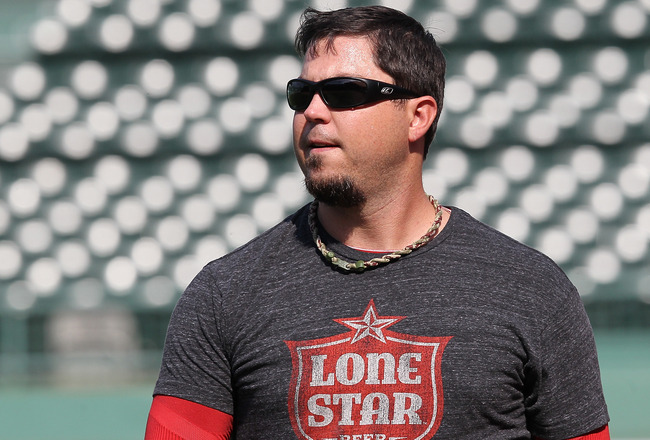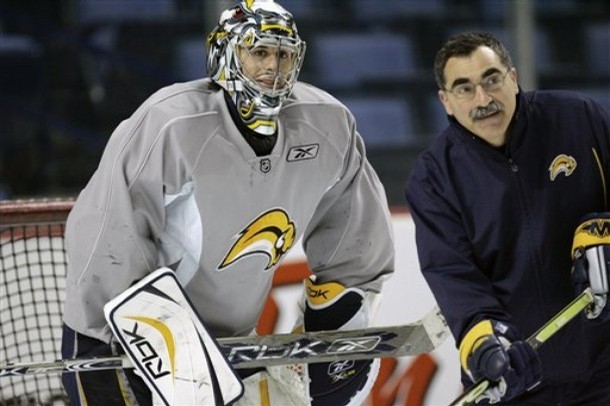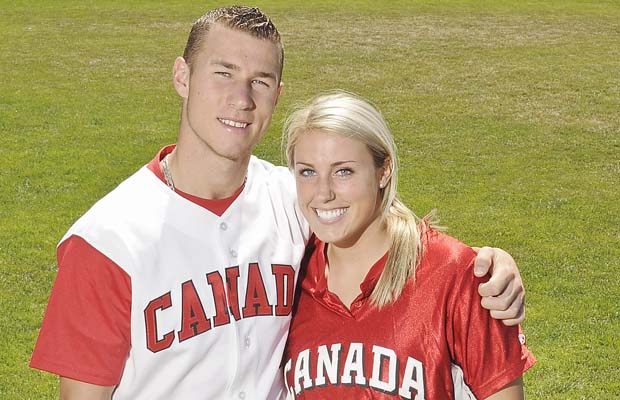A couple weeks ago, I read
a really nice piece by Peter Pattakos in the
Cleveland Scene. (You should probably check it out.) In it, Pattakos talks at length about the Cleveland Indians' mascot, Chief Wahoo, the origin of the "Indians" team name, and the politicking that has surrounded the two for the past few decades. Needless to say, the author is soundly on-side with the anti-Wahoo folks who rightly deride it as horribly racist and unnecessary. And, needless to say, the comment thread quickly filled-up with people - some of whom obviously
hadn't actually read the article - who came up with all sorts of, let's face it, patently stupid defenses of Chief Wahoo.
So, without further ado, here are some of those myths - some stupid, some not so much - debunked in what I hope is a much easier-to-consume form.
Myth #1 - The baseball team was given the name "Indians" in 1915 out of respect for Louis Francis "Chief" Sockalexis, a Native American who played for the Cleveland Spiders in the 1890s.
Well, actually... the name was meant to evoke the stereotype of the savage, blood-thirsty Indian of the then-recent Indian Wars.
Peter Pattakos covers this one adeptly in the article, but it bears repeating. To quote Joe Posnanski, "Why exactly would people in Cleveland — this in a time when Native Americans were generally viewed as subhuman in America — name their team after a relatively minor and certainly troubled outfielder?" Sockalexis wasn't even liked by the Cleveland fans, who were known to shout racist slurs and throw garbage - and this guy
played for the home team. The Indians' nickname was, in fact, originally given to the team by the 1890s journalists who jokingly (that is, mockingly) referred to Sockalexis' entire team as "Indians". When the team adopted the name at the behest of the next generation of journalists in 1915, contemporary stories include zero references to Sockalexis but numerous mentions of racist stereotypes, like the suggestion that the team will be "on the warpath all the time, and eager for scalps to dangle at their belts". But don't take my (or Pattakos') word for it:
 |
| From The Cleveland Plain Dealer, 1915. |
Myth #2 - Chief Wahoo represents old-time baseball and childhood memories of trips to the ballpark, not actual Native Americans.
Well, actually... it
can be, and
is, both about old-time baseball (and all the baggage that old-time baseball carries)
and actual Native Americans.
First,
nostalgia for its own sake is always a pretty weak argument. Don't just say that it's
good because it's old and familiar and you remember it fondly. Resorting to an 'it's tradition!' argument doesn't actually explain
why it's a good thing. Second, the way that nostalgia idealizes the past is
especially problematic, here. When we choose to remember or recognize only the good, we have to conveniently ignore the bad. Like, in this example, the memory of the shitty treatment given by the city of Cleveland to Sockalexis, their supposed inspiration. Because, let's remember, old-time baseball was also about excluding or alienating everyone who wasn't white.
Myth #3 - Whether you see a racist caricature or not is a matter of individual perception. It's all relative, so don't force your opinions on me.
Well, actually... just because it's relative
doesn't mean that every opinion is equal, especially when the people who don't see a caricature are often operating from a position of blissful ignorance.
Whenever someone uses "relative" this way, they deserve to be slapped, because it's being used in an incredibly reductive way in order to imply that if something isn't a fundamental law of the universe - ie. the definition of "racist" or "offensive", as opposed to the chemical composition of water - then it's entirely up for grabs. Only, that's
not actually true, and history and social consensus can't just be dismissed without consequence.
Take, for instance, the colour blue. Now, I could start referring to the colour blue by the name "red". And you might find that endearing, at first. But you would probably tire of it, eventually, and you might even grow concerned if I didn't stop, and either start correcting me (because I'm either colour-blind or, I suppose, an idiot) or refer me to a doctor (because I've lost my mind). In any case, even though the combination of the colour and its name are totally unmotivated and relative, that doesn't mean that they can be
ignored at will and
without repercussion.
So, whether you see a racist caricature has a lot to do with whether you're conscious of racist caricatures and their history - you don't need to know what a Sambo character is, or what they look like. I don't think that you need to be aware of how degrading Sambo-type caricatures were intended to be, how much pain they caused, and exactly what defined their appearance. Because you can just look at Chief Wahoo and the Indians logo and easily recognize that this isn't a flattering representation: knowing nothing else, you can be certain that it's unrealistic, pretty sure that it's comedic, and relatively confident that it's mocking.
 |
| Aaron Sechrist's comparison of Chief Wahoo to a Sambo caricature |
Myth #4 - People who are offended by Chief Wahoo take themselves too seriously. They should worry about more important things.
Well, actually... "important" is relative, too.
If you identify as a member of a group that has historically been mocked and/or villified - and made to feel less than human for it - you'd probably be sensitive, too, when a pro sports team continues to shove that in your face and tell you that your opinion and feelings don't matter. What's not important to you, personally, could be incredibly important to someone else.
So, there's an empathy problem here - a lot of white fans, for instance, are able to say this because they can't relate to the feeling. Which is probably why someone made this logo:
 |
| T-shirt from Shelf-Life Clothing Co. |
And let's be careful with our use of the word "important", especially to
avoid being inadvertently ironic. Because if we're saying it isn't
important because people are children are starving somewhere, then
surely a bat-and-ball game played by millionaires, who are employed
billionaires, isn't important either, right? And if a ball game isn't
important, then neither is Chief Wahoo - why not just change the damn
logo?
Myth #5 - But some Aboriginal/Indian/Native people are fine with it, so it must be okay.
Well, actually... no one person, or group of people, can speak for everyone. And we aren't always conscious of the ways in which we're being oppressed.
But it's also true that we ignore or excuse a lot of inequality, even when it affects us directly. Purely as a defense mechanism, we don't
want to believe that racism or sexism or homophobia exists. Even when we're victims of these processes, we often don't see them - in part, because seeing them would require us to see that we're complicit in processes that similarly discriminate against other people and benefit us.
And if that doesn't convince you... just think of every time you played pick-up sports as a kid, where your
team lost the argument if one of your teammates agreed with the position
of the other team. Regardless of the facts, that was always the
deciding factor. It was dumb, but it was forgivable, too, because you
were all just kids and your solution didn't necessary have to be logical. Adults, though, need to be held to a higher
standard.
Myth #6 - If the logo is racist, then that makes everyone who likes it racist. So, you're calling me a racist.
Well, actually... plenty of people unknowingly do and say racist things all the time, often without any awareness of it.
My favorite anecdote on this topic came from the first summer that I worked in a government office. One of my co-workers, who was reviewing my work, said that I didn't have to worry because, and I quote, "I'm not gonna Jew ya." And she had no idea that the verb, 'to Jew', had anything to do with Jewish people. No, seriously. (In her defense - I grew up in Sudbury, which, according to the 2006 census, is 93% white. Ignorance of obviously racist things is pretty common.)
The
real problem is when you know the arguments, you've heard the evidence, and you just ignore it all.
Myth #7 - The logo's not racist.
Well, actually... if you're still saying that, I'm hoping it's because you didn't bother to actually read this article. (Or that you're illiterate.)





















